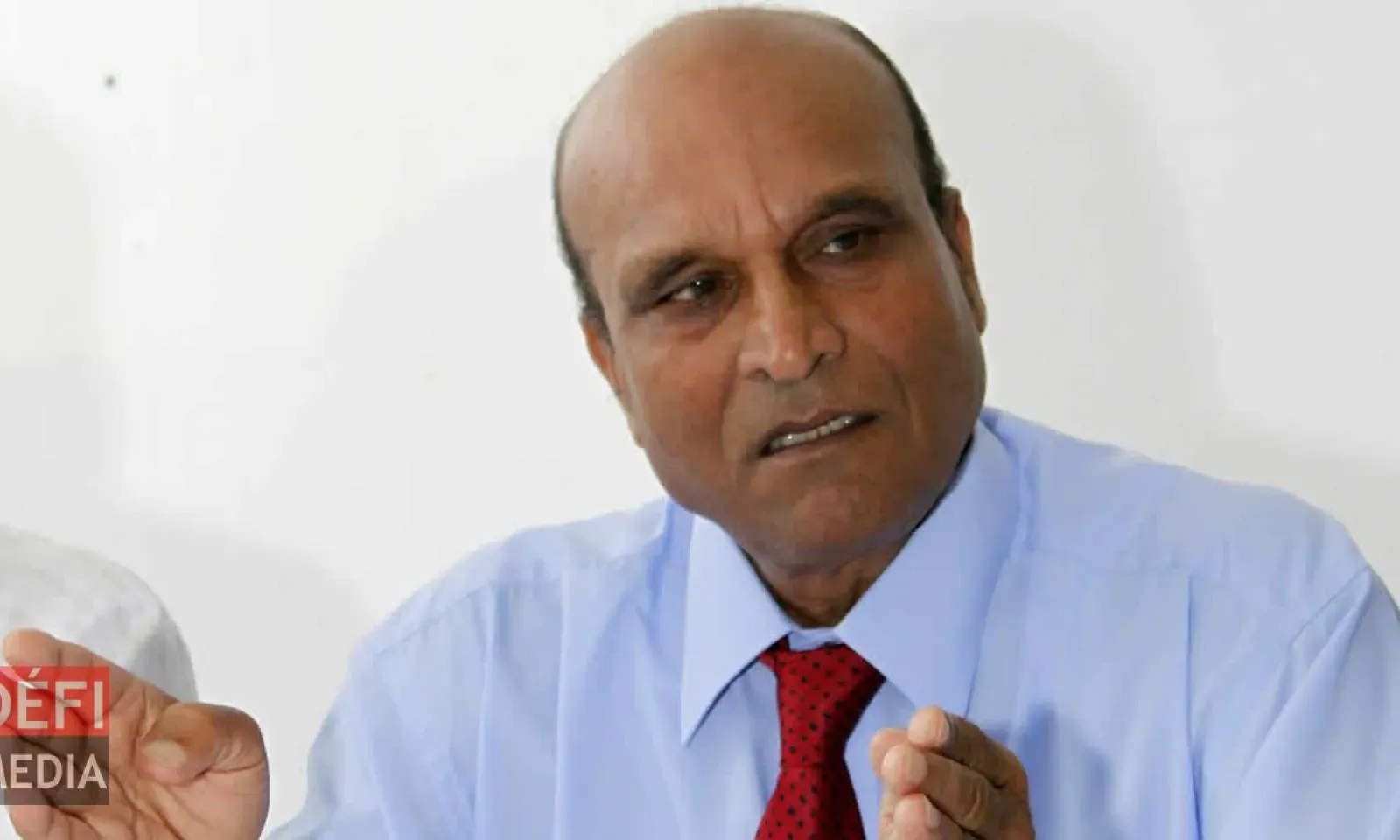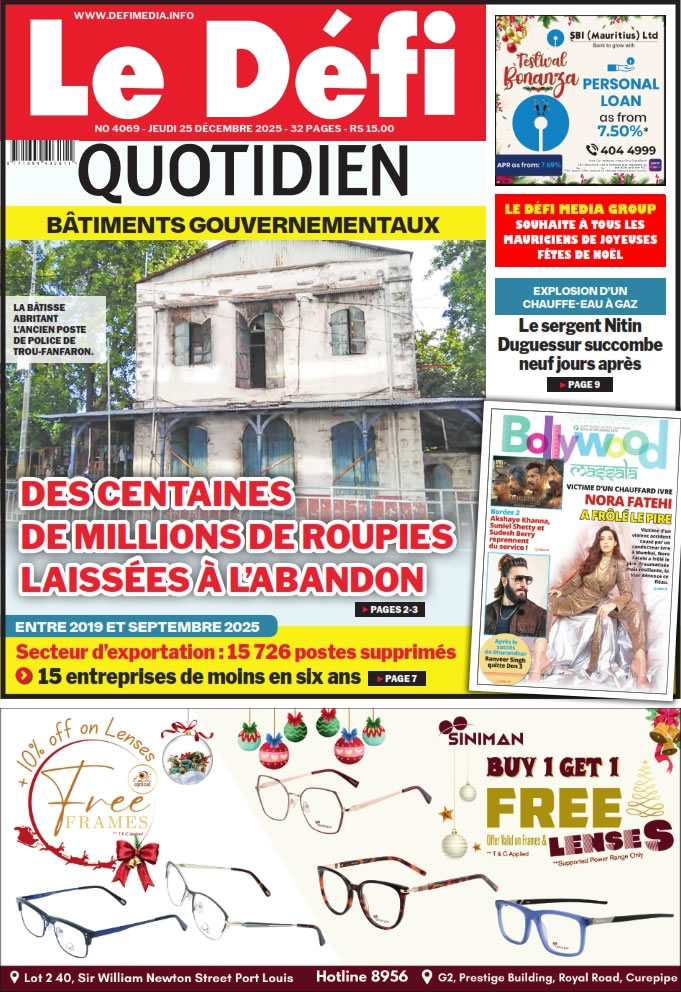
Every year during the period between October and December and sometimes extending to January and February as in 2025, we hear the same old story on the state of our surface and underground fresh water resources. Authorities ring the alarm bell with rising decibels depending on the state of our surface and underground water resources. As matter gets worse, authorities come forward with strict punishable laws against all those who “ gaspille de l’eau” unnecessarily. This stressful state of affairs cannot go on year after year. If it does, then those responsible for the research and management of our fresh water resources should be drowned in the pool of inefficiency.
Mauritius receives on average 4000 mm of annual rainfall in the catchment zone of the Central Uplands and the amount decreases as we approach coastal lowlands. When we compute the annual rain water input and the surface area of Mauritius two observations can be made;
1. the Island is not water stressed and
2. the paradox remains that every year more than 100 Million M3 of fresh water are drained to the sea through surface flow from some 53 streams and through underground water paths.
Therefore, our motto should be “let not a single drop of rain, our only source of water, that falls on our highly permeable young basaltic rocks and soils reach the sea before it is used several times”.
We all know that the period December – March is our water harvest months with February being the wettest. Paradoxically, we often hear the alarm bells of floods during that period making Mauritius one of the most vulnerable Small Island Developing States. During the wettest months, our 53 streams act as conveyor belts carrying hundreds of thousand cubic meters of our most precious resource into the lagoon. This reminds me of the following writing from Malcolm de Chazal “ et la pluie glisse dans le sous-sol caverneux de notre île et s’en va par des ruisseaux souterrains et en surface à la mer. La mer prends peu a peu la richesse de la terre et la richesse du ciel…Nous laissons toute notre fortune aller a la mer. C’est bête… Agissons “.
Let us be frank and fair. Billboards, restriction laws and alarm bells are not the remedy. What we need is efficient and scientific hydrogeological investigations of additional underground water resources all over the island as additional borehole drilling will help alleviate the water stress problems to a large extent.
The CWA borehole drilling programme
This is precisely what the CWA has been doing with an accelerated borehole drilling programme since April 2023 following intensive hydrogeological investigations carried out in the field and using the latest “state of the art” underground professional water detection device which only the CWA has in possession. There are rich underground water basins in our volcanic environment and they do not deplete as fast as our surface reservoirs.
The Northern regions of Mauritius become water stressed more than elsewhere during the period October to December. Yet, hydrogeological investigations carried out by the C.W.A hydrogeological Consultant in May 2023 show that a high volume of underground water flows northwestwards and northeastwards from La Nicoliѐre mountains and a high percentage seeps to the sea as shown in figure 1. Within a period of one year, CWA has successfully drilled several productive boreholes in the region to provide fresh potable water to consumers.
The assessment of the yield of ground water sources is more difficult and more subjective than the comparable calculation for a surface water resource because the underground water reservoirs are invisible from ground surface. As such, their vertical and lateral dimensions must be accomplished by applying different geophysical techniques and extrapolations from geological and morphological maps. Yet, a success probability rate turns around 25 % which is a global average.

Flow of underground water
l Fresh water seepage to the sea.
Methodology adopted by the M&E Section of the CWA
1. Production and analysis of the surface and subsurface geology and morphology maps of the area under investigation derived from various sources. This is an important tool for decision making.
2. Identify possible sites for drilling based on subsurface hydrological data obtained from core logs, levels of static and dynamic water from nearby bore holes and wells and other relevant information.
3. On site geological, morphological and geophysical investigations using different techniques such as dowsing, underground water detector device and finally the latest acquisition, the 950 Professional Underground Water Detector.
4. Once a prospective site has been located and pegged, an accredited Company engaged in drilling works is officially requested to mobilise and perform the drilling as per agreed contract .

Summary of drilling works performed by the M& E Section of the CWA from October 2023 to 07 November 2024
• 15 boreholes drilled.
• 40,000 M3 of fresh water produced per day and injected into the CWA system.
• MUR 16.6 million invested.
• Success rate : 78.6 % compared to the 25 % average global standard.
Water is an economic good, a valuable natural capital for us. It is a finite and vulnerable resource essential for life, for development and for the environment. So , let us inject the required capital in the forthcoming national budget to allow the Water Resources Unit and the Central Water Authority to effectively explore, retain and distribute our water resources in a rational and sustainable manner for the proper economic development of Mauritius. If they go on doing business as usual, then the paradox as exemplified by the place names Riche-en Eau and Rivière Séche will continue to prevail.
Prem Saddul
Associate Professor &
Former C.W.A Consultant in Hydrogeology








